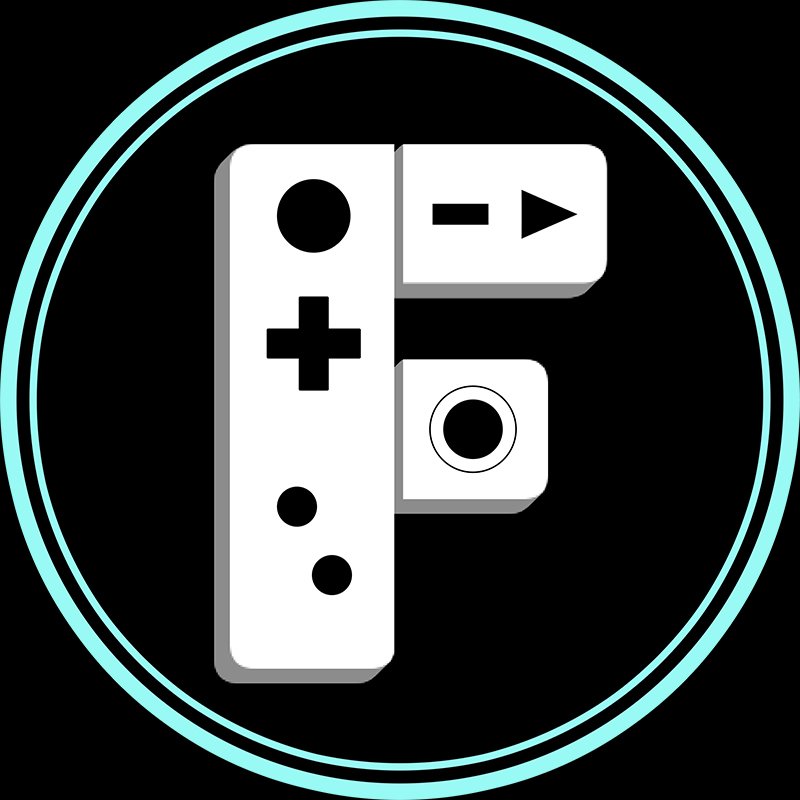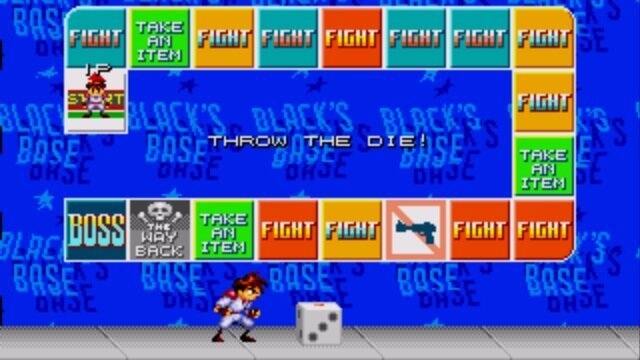Gunstar Heroes Dice Palace Level is Still Mind-Blowing!
HOW EXPERIMENTAL DESIGN CAN ENRICH GAMES
Gambling, casino, embodiments of chance, these themes and motifs are few and far between in games and when it comes to good uses of that style, only Cuphead and Devil May Cry 4 comes to immediate mind. Yet, one of the most memorable examples to me was a unique approach to chance found in the Sega Mega Drive classic, Gunstar Heroes. Treasure crafted an unforgettable experience with their Dice Palace stage, using the level as a way to introduce lots of experimental concepts that might otherwise have been cut from the core run-and-gun title. Let’s explore the magic used to make this level happen and discover why this type of design philosophy could be used to great effect in other game projects.
NOTE: This article is based on the Mega Drive version of Gunstar Heroes. Anything related to the 2-player mode is not included.
PHASE 1
Let’s divide this level into phases, with the above image being Phase 1. The board game is laid out above the character’s head to make sure it’ll be seen clearly; not to mention that it takes up most of the screen. This screen evokes the feeling of being trapped, accentuated by being unable to scroll the screen as opposed to the movement used in the game prior to this level. The placement of these visuals perfectly captures the idea that this is a board game with different rules than the run-and-gun gameplay.
PHASE 2
In Phase 2, you see a die in front of you. The rules are simple, throw the die and progress through the game. Affordance created! However, this can act as both a clear and non-clear affordance; first of all, the die doesn’t show 4, 5, and 6, meaning that the length of gameplay can be multiplied by 1. 3-6! Secondly, the player won’t notice this fact, until they escape from Dice Palace! Of course, the player thinks the die will show all the numbers (clear affordance), but this won’t happen until they reach the end or replay it several times (non-clear affordance), so that this part is more and more played by the player, without them blaming their chance, by getting used to the situation they’re dealing with.
EXTRA PHASE
After having fun with cool obstacles, there is a square saying “the way back”, and as you can guess it leads the player to the first square. But fortunately, you don’t have to fight the defeated bosses again after facing them once, so you’re just going to encounter the ones that haven’t been landed on already. But what if you were in an item room and didn’t pick up any items? Unfortunately, the game doesn’t let you enter the same room again, even if you missed the items. This is the main reason the game becomes a little harder here, especially when you want a health item and are about to die.
EXTRA PHASE 2
This is again another extra phase since this one can happen at any time by the player. But did you know that the game uses a pace-booster system? The concept of pace-booster is not something new these days: Gears of War or Nioh are the best examples. In Gears of War, you can reload faster by pressing a certain button at a particular time. Using this mini-game, the game’s pace feels speedy and helps the combat become more versatile. This is comparable to Gunstar Heroes (but in an abstract way); you don’t have to wait for the die to fall, since you can grab the die in the air and throw it in any direction you want. This is a subtle feature that makes the pacing more dynamic.
After a little analysis, it’s time to dive into the coolest things in this little board game, proving that Dice Palace is more than a level and each of its obstacles could be part of different video games by themselves!
Dropping bombs is not a unique feature, but it can be so when we combine the idea with rewinding time. As a retro gamer who spent a lot of his time playing older titles, I can’t remember anything close to this mini-boss. Bombs drop, and then the time is rewound automatically again and again. The boss is easy to beat, but seeing time rewinding in a Mega Drive title is a surprise.
This one is a true example of an innovative concept: a maze inside of a maze! Dice-Maze (as its name suggests) is a maze by itself and being trapped in another maze is a challenging concept. Surprisingly, said concept works and adds some puzzle elements to this run-and-gun title. As you can see this is a dynamic maze in which you should find your way through a series of obstacles, each of which has one of these colors: green, blue, red, and yellow. Hitting an obstacle with a particular color causes other obstacles with the same color to disappear. Obviously, it’s not a fight, but even as a little mini-game it’s an ambitious element in a run-and-gun game.
This one is super fun. See the size of the boss! It’s like when Kratos faces down one of the gods of Olympus in God of War! Ridiculously enough, this boss is really powerful. He can even grab the player and throw him like a jellyfish! Also, he’s able to create multiple clones of himself to make the situation more difficult.
This next one is a concept that could be used to make an entire video game: shoot an object to scroll the screen. When you’re in a tight spot and see the bombs destroying the platform you’re on, then it’s time to shoot the crank (see the top left corner of the image) and scroll the screen to have more space to avoid attacks and better opportunities to shoot the weapon of mass destruction.
Undoubtedly, Gunstar Heroes was ahead of its time. The former Konami employees did their best and created a highly detailed game as their first effort in their new studio and Treasure went on to create several timeless games such as Sin and Punishment, Mischief Makers, and Ikaruga.
I could spend a lot more time breaking down each level since Gunstar Heroes is full of innovative ideas packaged as a simple-to-play run-and-gun title. Maybe this paragraph from an interview conducted by Retro Gamer shows why Gunstar Heroes is an innovative gem:
Masato Maegawa, Treasure’s president and Gunstar Heroes’ producer, is an affable chap, completely modest (but realistic) about the strength of his team’s productions. We ask him about the context of Gunstar Heroes – what led to its production? “We’d only just established our new company, Treasure, so we were just really keen above all else to do something that we liked and something that was our forte,” says Maegawa. “Gunstar Heroes was that game. We approached the project with the concept of ‘anything goes’, and we incorporated many types of separate ambitious ideas in that concept.”
And about the Dice-Maze level Maegawa said:
“The dice stage is really experimental,” Maegawa concurs, “and again it was under the idea of ‘anything’ being acceptable that we decided to throw a board game into the mix. But none of us are particularly fans of board games as such…”
Thanks to Retro Gamer for taking the time to do that interview. Knowing specific thoughts from Maegawa about the Dice Palace is truly insightful.
In conclusion, the reason the Dice Palace is so memorable and fun stems from the fact that the stage was experimental and therefore unique compared to the other parts of the game. It uses the framework of a board game to offer a marathon of variety in a way that makes the level unforgettable. To level designers, I think it would be great to embrace more experimental elements or at least create opportunities for experimentation to occur. You may just find that these unique, out-of-the-box experiences resonate more with players. It certainly worked for the best in Gunstar Heroes.
For more of my exploration of unique retro gaming, check out my analysis of a Mortal Kombat bootleg game. I also wrote a modern review of Assault Retribution on PS1, a game that people of the time desperately wanted to be a 3D approach to Contra.













Last year thousands of layoffs beat down the spirit of the games industry. Despite this tumultuous state, some of the best games we’ve seen in most genres released and that’s worth celebrating. We only hope that 2023 will hopefully be a turning point for everyone involved in the games industry.